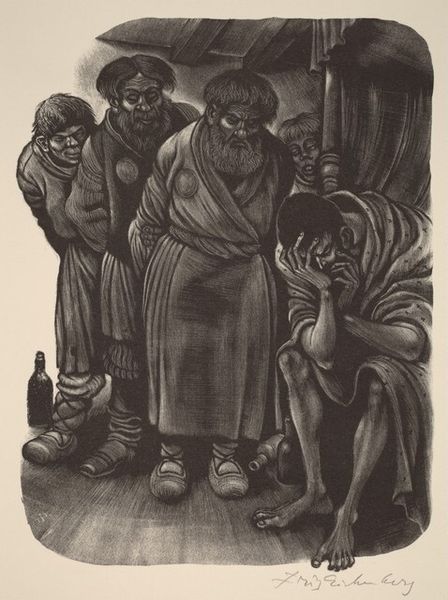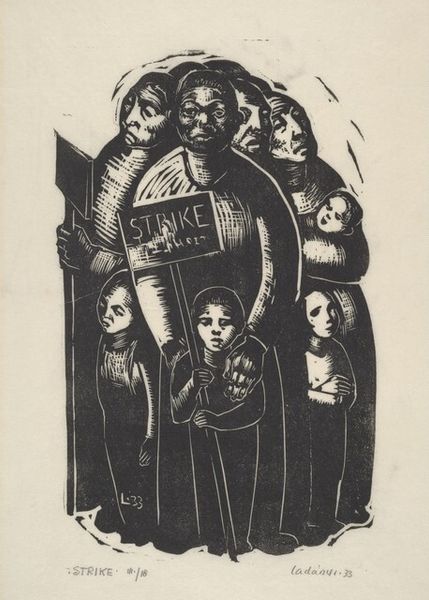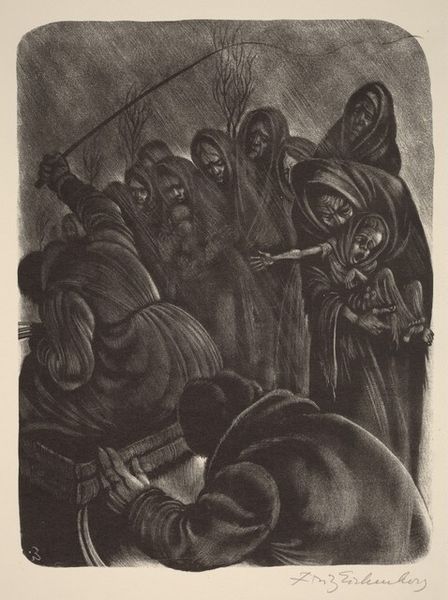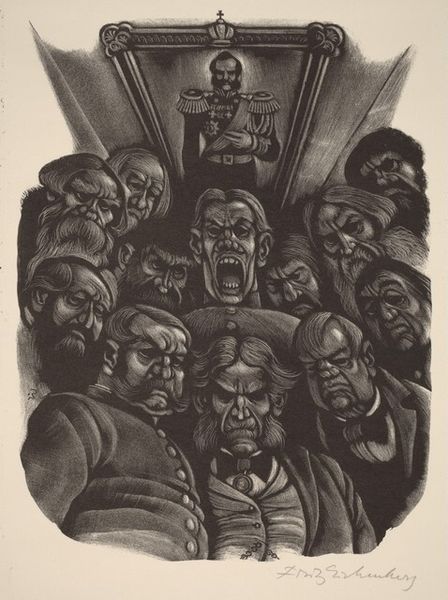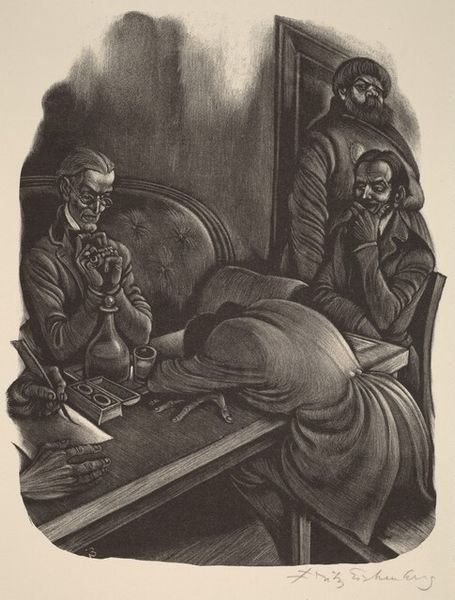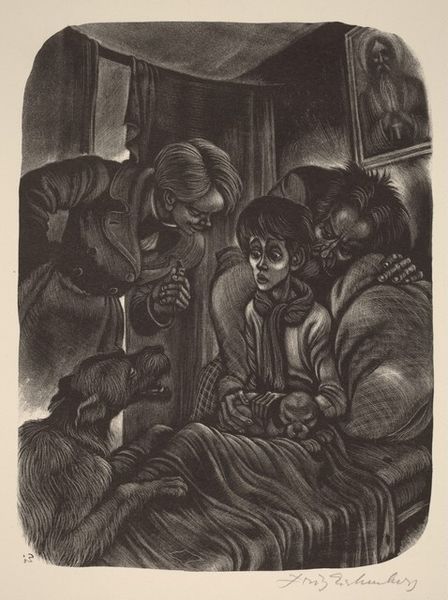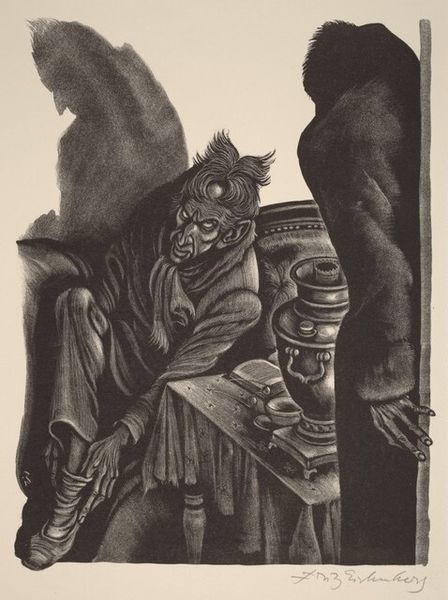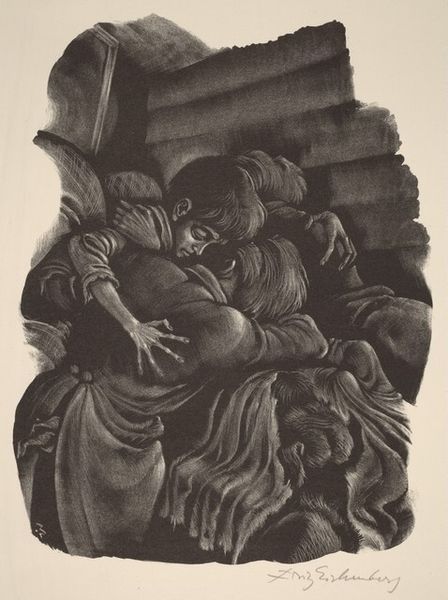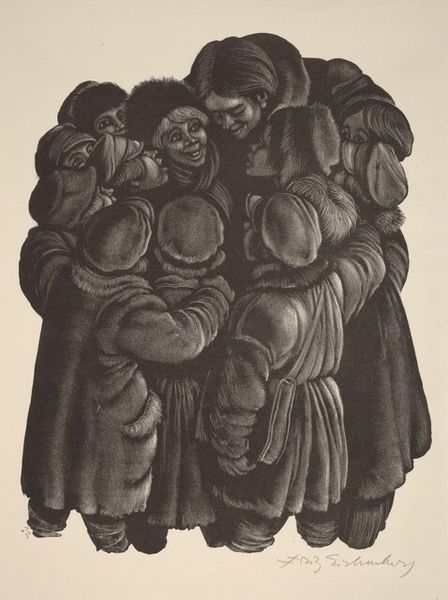
drawing, print, etching
#
portrait
#
drawing
# print
#
etching
#
caricature
#
caricature
#
figuration
Copyright: National Gallery of Art: CC0 1.0
Editor: So here we have Fritz Eichenberg’s etching from 1949, "Old Samsonov," subtitled "Book VIII: Mitya, facing p.288". There's such an intensity in the central figure's glare; it's honestly a little unsettling! What’s your take on it? Curator: Unsettling is a key reaction, definitely! Look at the way Eichenberg uses caricature. The exaggeration of Samsonov’s features, the hooded robe, and the almost theatrical staging all contribute to a powerful critique, wouldn't you agree? Editor: A critique of what exactly? Curator: Think about the time. 1949, just after World War II. What might Eichenberg, a German-American artist known for his social justice advocacy, be saying about power structures through this depiction of a character from Dostoyevsky? Who holds power and at whose expense? Is there commentary on authoritarianism, or even complacency in the face of it? The dark lines of the etching, creating a sense of claustrophobia. Is there a relationship here between visual tension and political tension? Editor: That’s interesting. I was mostly focused on the individual, this almost grotesque figure, but situating it historically really shifts the meaning. So, you’re saying it is not *just* about this literary figure; instead, it's about how that character speaks to the broader sociopolitical landscape? Curator: Precisely! It’s a lens through which we can examine questions of power, complicity, and even the artist's own positioning as a commentator. How does bringing that socio-historical context change your perception now? Editor: I see the caricature less as a simple grotesque image and more as a symbol, maybe of oppressive power. It also changes how I see the figures looming behind him, less as characters from a book, but now they appear like enforcers of oppressive regimes. Curator: Exactly! Context opens up a whole new vista for engaging with an image like this, going far beyond just immediate impressions. Editor: I agree. Now, knowing the historical background and the artist's focus, I can engage the work on a deeper level. Thanks so much.
Comments
No comments
Be the first to comment and join the conversation on the ultimate creative platform.

